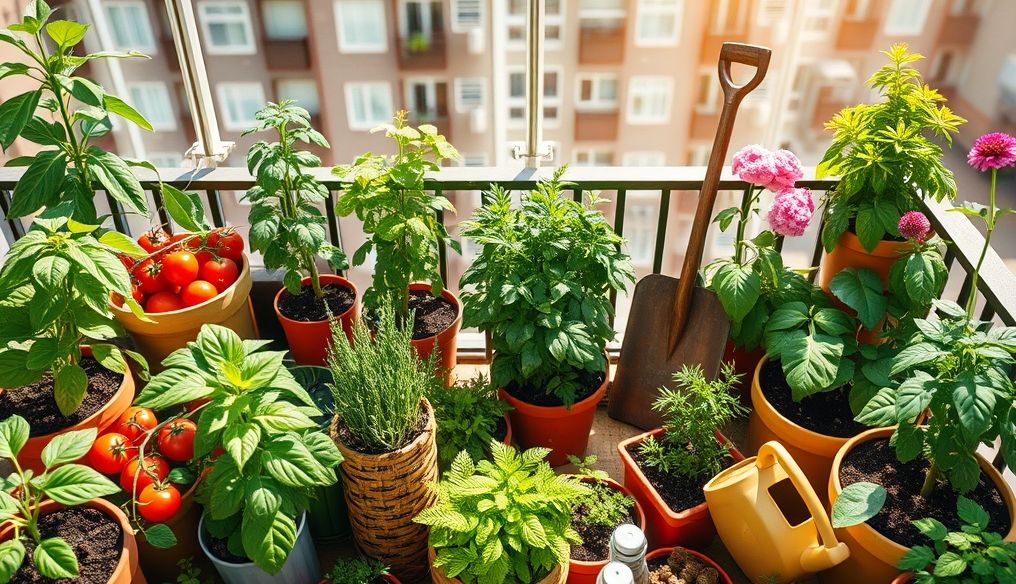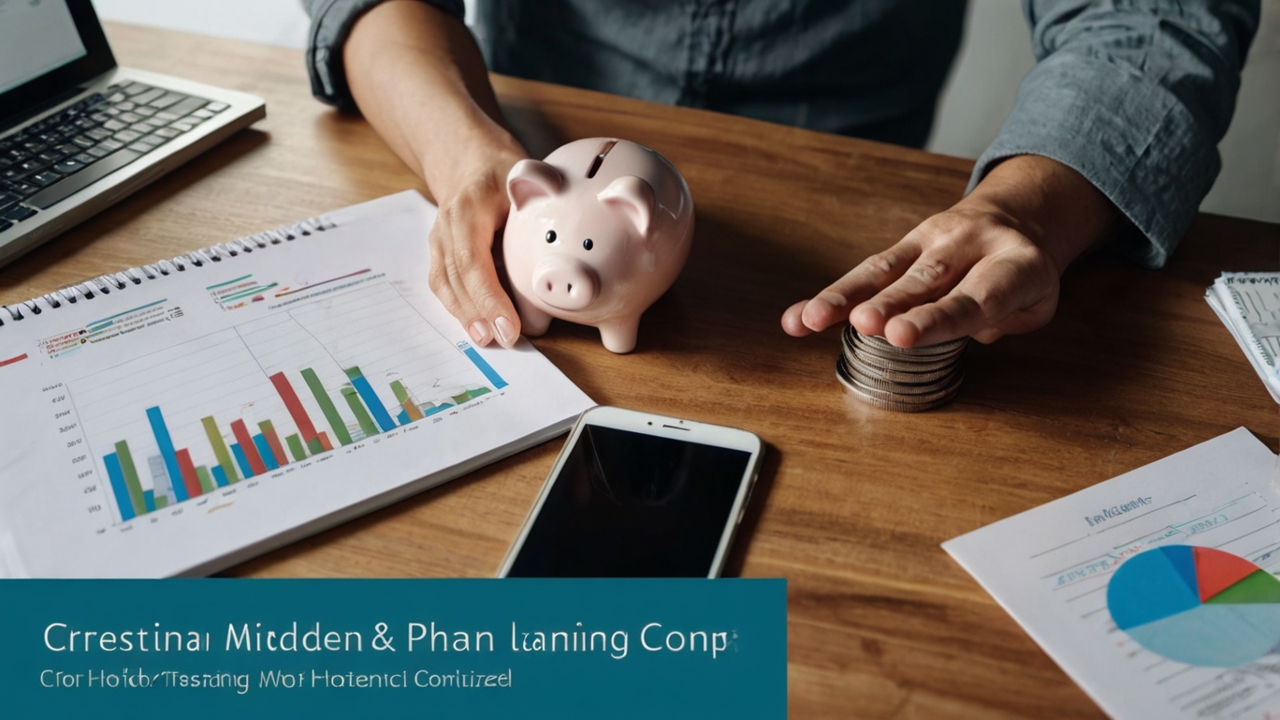Grow and Save: A Comprehensive Guide to Home Gardening for Self-Sufficiency and Saving Money
In a world facing continuously rising food prices and increasing awareness of the importance of healthy and sustainable food, home gardening emerges as a practical and effective solution for achieving self-sufficiency and saving money. Gardening is no longer limited to farms and vast fields; it has become accessible to everyone, even in small apartments and narrow balconies.
Chapter 1: Why Home Gardening? Benefits Beyond Saving
Home gardening is not just a way to save money; it is a healthy and sustainable lifestyle with many benefits:
- Saving Money: Reducing reliance on buying vegetables and fruits from stores, thus lowering monthly food expenses.
- Healthy and Fresh Food: Obtaining fresh and organic vegetables and fruits, free from pesticides and harmful chemicals.
- Environmental Sustainability: Reducing the carbon footprint from transporting food over long distances and contributing to environmental conservation.
- Physical Activity: Gardening is an enjoyable and beneficial physical activity for health, helping to improve fitness and reduce stress.
- Education and Entertainment: An opportunity to teach children about the plant life cycle and the importance of healthy food, and spend enjoyable and useful time with the family.
- Improving Air Quality: Plants absorb carbon dioxide and produce oxygen, improving air quality in the home.
Chapter 2: Planning Your Home Garden: Where to Start?
Before starting to garden, it's important to plan your home garden well to ensure success. Here are some basic steps:
1. Assess Available Space:
Determine the space available for gardening, whether it's a home garden, balcony, rooftop, or even a sunny window. Measure the space and determine the direction of the sun to identify suitable plants.
2. Choose Suitable Plants:
Choose plants that suit the available space, local climate, and your gardening experience level. Start with easy plants like lettuce, tomatoes, radishes, and mint.
3. Set a Budget:
Set a specific budget for buying seeds, fertilizers, gardening tools, and pots. Start with a small budget and increase it gradually as you gain experience.
4. Prepare a Planting Plan:
Prepare a planting plan that specifies planting and harvesting dates for each plant, irrigation and fertilization methods, and pest and disease control methods.
Chapter 3: Choosing the Right Soil: The Foundation of Success
Soil is the foundation of successful gardening, so it's important to choose the right soil for each plant. You can buy ready-made soil from garden stores, or prepare it yourself by mixing clay soil, sandy soil, and organic materials like compost.
Types of Soil:
- Clay Soil: Retains water well, but can be heavy and difficult to drain.
- Sandy Soil: Drains well, but does not retain water well.
- Loamy Soil: A mixture of clay and sandy soil, considered the best for gardening.
Chapter 4: Watering and Fertilizing: Key to Healthy Growth
Watering and fertilizing are essential elements for healthy plant growth. Plants should be watered regularly, but avoid overwatering, which can lead to root rot. Use organic fertilizers to strengthen plants and increase their production.
Watering Methods:
- Manual Watering: Using a hose or bucket.
- Drip Irrigation: Saves water and reduces weed growth.
- Sprinkler Irrigation: Covers a wide area, but can lead to water evaporation.
Types of Fertilizers:
- Organic Fertilizers: Such as compost, worm castings, and plant residues.
- Chemical Fertilizers: Provide nutrients quickly, but can be harmful to the environment.
Chapter 5: Pest and Disease Control: Protecting Crops
Pests and diseases can threaten crops and lead to significant losses. Plants should be monitored regularly and pests and diseases detected early. Use organic control methods to avoid using chemical pesticides.
Organic Control Methods:
- Biological Control: Using beneficial insects to eliminate harmful pests.
- Spraying with Organic Pesticides: Such as neem oil, potassium soap, and garlic extract.
- Removing Infected Plants: To prevent the spread of diseases.
Chapter 6: Gardening in Pots and Containers: An Ideal Solution for Small Spaces
Gardening in pots and containers is an ideal solution for small spaces such as balconies and rooftops. Choose pots and containers suitable for the size of the plants, and make sure there are good drainage holes.
Tips for Gardening in Pots and Containers:
- Use light and well-draining soil.
- Fertilize plants regularly.
- Place pots in a sunny location.
- Water plants regularly, but avoid overwatering.
Chapter 7: Hydroponics: The Future of Home Gardening
Hydroponics is a method of growing plants without soil, using water and nutrients. Hydroponics is an effective way to grow plants in small spaces, saves water, and reduces the use of pesticides.
Types of Hydroponics:
- Deep Water Culture: Plant roots are submerged in water and nutrients.
- Nutrient Film Technique (NFT): Water and nutrients flow over the plant roots.
- Aeroponics: Plant roots are sprayed with water and nutrients.
Chapter 8: Practical Examples from the Arab and Global Market
Many individuals and families in the Arab world and globally are benefiting from home gardening to save money and improve their quality of life.
- Egypt: Initiatives to encourage rooftop gardening in large cities.
- Morocco: Projects to teach women home gardening in rural areas.
- United Arab Emirates: Using modern technology in vertical farming inside homes.
- United States of America: The spread of community gardens and home gardens in large cities.
Chapter 9: Realistic Statistics and Figures
Statistics indicate that home gardening can save up to 30% of monthly food expenses. Home gardening also contributes to reducing the carbon footprint by up to 20%.
"Home gardening is not just a hobby, it's an investment in your health and your future."
Dr. Ahmed, Expert in Sustainable Agriculture
Chapter 10: Practical and Applicable Tips
Here are some practical tips that can be applied to achieve success in home gardening:
- Start small and don't try to grow everything at once.
- Choose plants that suit the local climate and available space.
- Use well-draining soil and fertilize plants regularly.
- Monitor plants regularly and detect pests and diseases early.
- Don't be afraid to experiment and learn from mistakes.
- Share your experience with others and exchange expertise.
Home gardening is an enjoyable and rewarding journey, starting with a small step and ending with a bountiful harvest of fresh food and saving money. Start today and enjoy the benefits of home gardening!




